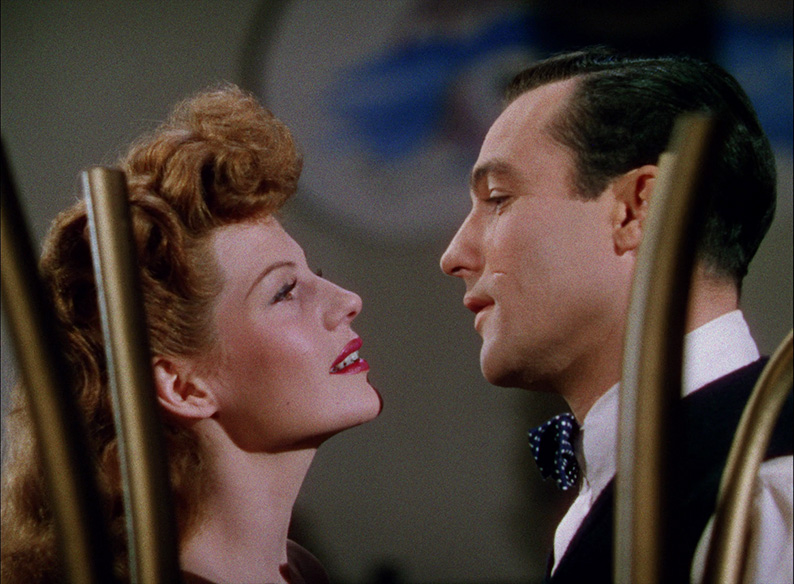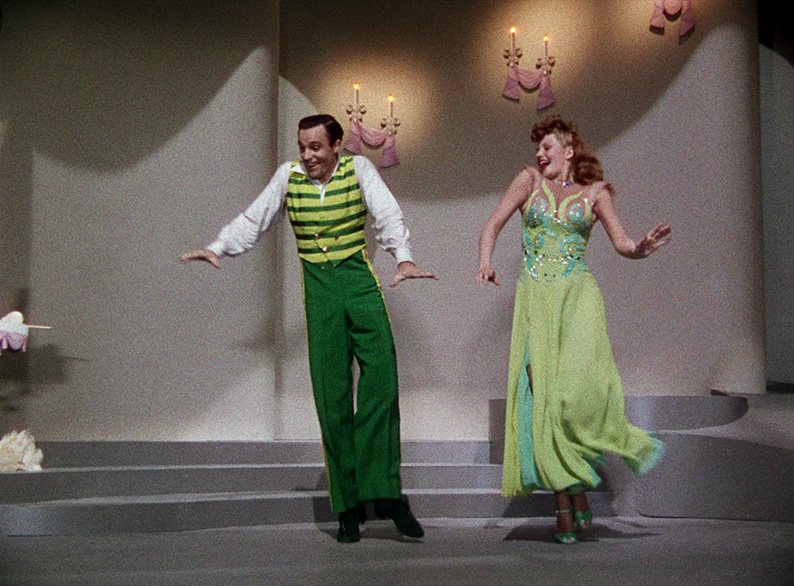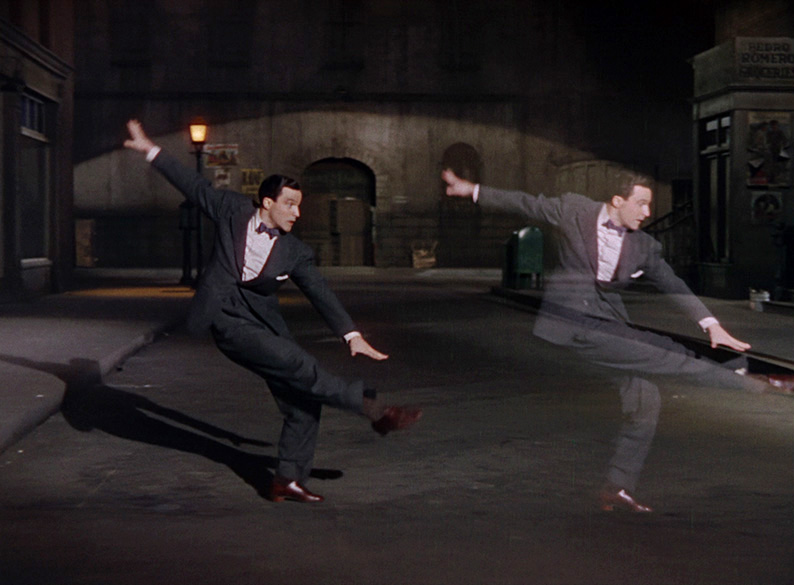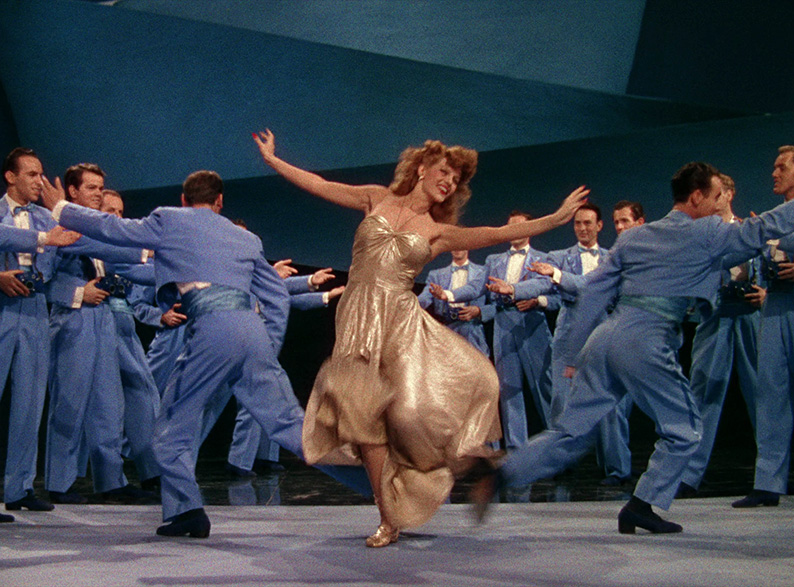|
A few years back I was teaching on a media theory course, and one week we were required to look at how filmmaking styles had changed over the years. Two genres I used as examples were musicals and martial arts movies, both of which revolve primarily around set-pieces that showcase the specific skills of their lead performers. Yes, these films had stories, but the main reason that the likes of me lied about our age to see Enter the Dragon or Fist of Fury on their release was to watch Bruce Lee fight, just as the key draw of films like Top Hat or An American in Paris was the prospect of watching Fred Astaire or Gene Kelly dance and sing. Plots in both genres tended to follow predictable formulas, and most films that fall into either category still tend to be judged on the quality of their showpiece scenes, and in the class what we were studying was how the presentation of these set-pieces has changed over time. By the end of the lesson there was general agreement that whilst the pace had been upped in the intervening years, something significant had been lost, and this was almost always down to direction and editing. Whereas earlier classics in both allowed the skills of the performers to shine by providing the clearest view of them in action and letting shots run, the more modern penchant for accelerating the pace with multi-camera setups and machine-gun editing was neutering these very same skills. Indeed, as we discovered in the practical follow-up lesson, with enough camera angles and fast cuts it's perfectly possible to make even the least athletic actor look like a premium fighter. But do this and what the audience is responding to is not the performer but the sleight-of-hand deception of the filmmakers, which for my money robs both genres of the very thing that makes them so special in the first place.

One example we looked at was the most beloved of all film musical numbers, Gene Kelly's glorious performance of the title song in Singin' in the Rain. In this entire glorious four-minute sequence there are just eight edits. Eight. At a randomly chosen moment in the All That Jazz number from the 2002 movie version of Chicago, those eight edits shot past in just twelve seconds, and that's one of the more sedately cut parts of that song. Yet Kelly's performance of Singin' in the Rain is, for me at least, far and away the more exuberant and seductive of the two. Here the energy is not created on the editing bench but in Kelly's grace of movement and the subtle but seductive glides and cranes of cinematographer Harold Rosson's camera. We can see he's faking nothing, and as a result are able to fully appreciate and enjoy his skills as a dancer and dance choreographer, much as we would if he were performing on stage. And it still gives me a thrill to watch Kelly in action, the same thrill I get when I watch Donald O'Connor dodging and bumping into objects and running up walls into backward somersaults in the same film for his glorious performance of Make 'Em Laugh. Since CG made it easy to paint out wires or add tweaks to movements or even transpose real faces onto computer generated bodies, the sense of wonder that I get from watching a skilled acrobat or dancer or martial artist flex their talent on-screen is in danger of being lost. Now we cynically assume everything has been faked and have to be loudly assured by the film's publicity that stunts were done for real in order to even start believing what we see and tipping our hats again to these skilled performers.
Before I go on, I should perhaps point out that this entire outpouring was triggered by a single sequence in the 1944 musical, Cover Girl, one that perfectly illustrates the very specific pleasure that comes from being able to watch an inventively staged song and dance scene unfold without any directorial distractions. It's also a sequence that in some ways anticipates Kelly's Singin' in the Rain showstopper. Indeed, there's more than one aspect of Cover Girl that you'll find echoed in that later and even more widely celebrated Gene Kelly musical. But I'll get to all that in a minute.

If you know your way around musicals, the plot of Cover Girl will hold few surprises. The lively and attractive Rusty Parker (Rita Hayworth) works as a chorus girl at a nightclub run by her boyfriend Danny McGuire (Gene Kelly), aided by his effervescent friend Genius (Phil Silvers). She's happy with her lot but longs for stardom, and when fellow dancer Maurine Martin (Leslie Brooks) reveals that she will be skipping rehearsal to attend an audition to be the cover girl of Vanity magazine, Rusty sees this as a potential quick route to fame and follows her lead. Concerned that the red-headed Rusty might outshine her, Maurine sabotages her rival's audition by advising her to do everything that the magazine's testy publishing assistant Cornelia “Stonewall” Jackson (Eve Arden) detests. Cornelia ends up reluctantly recommending Maurine, but on visiting the nightclub to see her in action, middle-aged Vanity owner John Coudair (Otto Kruger) is instead bewitched by Rusty, who is the spitting image of her grandmother Maribelle Hicks, whom Coudair fell in love with as a brash young man. Offered the chance to become the Vanity cover girl, she is torn between her loyalty to Danny and just where this big break might ultimately lead her.
We're used to seeing Kelly as the smiling good guy, but once Rusty gets her call-back, both Danny and Genius really do behave like dicks, attempting to guilt-trip her into not accepting the offer solely due to how it will impact on them. That said, Rusty is not just a dancer but a cornerstone of a close friendship triangle, one that could well be threatened by her possible career change. It's a bond symbolised by a Friday night ritual in which she, Danny and Genius cheerfully make their way to a local bar and order oysters they don't eat in the hope of finding a pearl that they believe will forever change their fortune. Danny, of course, is also in love with Rusty, but really is a clod about expressing his deepest feelings and is too stubborn and too jealous of the attention being heaped on her by Coudair's wealthy friend Noel Wheaton (Lee Bowman) to just tell her what she seems to be aching to hear. Anyone want to guess how this all works itself out?

Of course, just how much you warm to Cover Girl will depend not on its plot machinations but its musical numbers – the first collaboration between Jerome Kern and Ira Gershwin – and this, as ever, will be a very personal call. I liked the songs a lot, but didn't get the same instant charge from them as I did from those in other genre favourites like Top Hat, On the Town and Singin' in the Rain (again, I know, but the songs in that movie are great). But as I intimated above, there are two absolutely show-stopping musical numbers that alone would make this an absolute must-see for even casual fans of the genre.
The first, the exuberant Make Way for Tomorrow (whose lyrics are by E.Y. Harburg), begins in a bar as Danny, Rusty and Genius once again fail to find the pearl they've been seeking and takes all three down a street of some length in long, fluid shots that are only interrupted to move the camera closer for emphasis and even then only rarely (word has it that Kelly was able to have several sound stage walls removed to facilitate the distance the camera and dancers would be required to travel). Here you can see Kelly, in the way he choreographs the action to camera, dry-running that aforementioned title number from Singin' in the Rain – it even pauses briefly at one point so the dancers can react to the disapproving looks of a beat cop, a key tempo change moment from the later number. Then again, Kelly's choreography assistant on the film was an uncredited Stanley Donen, later to be his co-director on – you've guessed it – Singin' in the Rain. Even the central trio here of good-looking song-and-dance man, the talented girl he loves and lively comical sidekick is reworked in the later film by Kelly, Debbie Reynolds and Donald O'Connor as Don Lockwood, Kathy Seldon and Cosmo Brown, who had a memorable musical number together in the exuberant Good Morning (which this scene also anticipates). The sequence itself is an absolute treat, particularly once the three get on the move and they interrupt a courting couple, prop a drunk up against a lamppost and trade dance steps with an equally ebullient milkman without breaking the flow for a second. It's an absolute joy to watch, and if you weren't hooked before then this will surely reel you in.

But for technical wizardry, even this is topped by a solo dance number (well, sort of) in which Kelly dances with his own reflection, one that first appears in shop windows (the way it darts from one window to the next prompted my first “what the...?” response) and then leaps out onto the street to become his manipulative dance partner. And I genuinely don't know how they did some of this. Placing a second, half-ghosted version of a character in the same shot was not a major deal, even for a film of this vintage, but the problem for years was that this required the camera to remain static – move the camera and you have to manually reproduce the exact same move with the exact same timing for the second character. Good luck with that one. Many years later this became technically possible thanks to motion control technology (I still remember my astonishment at the sight of two characters played by Jeremey Irons walking side-by-side down a corridor in David Cronenberg's Dead Ringers as the camera glides with them), which records the movement of a specially mounted camera and then is able to exactly recreate that same movement as many times as you require, making it possible to precisely align the two images together. Yet this technology was still in its infancy in the late 1960s, and Cover Girl was shot in 1944. And when the camera moves, it moves with both versions of Kelly as if the two really are in the same scene. Only very occasionally does the reflected Kelly feel in any way disconnected or out of sync with his partner, and for the most part the camera movements on both are perfectly matched. Then just as I'm picking my jaw up from the floor, one Kelly runs up and vaults over the head of the other. It's an astonishing piece of trick photography that's just a little undermined by the lighting continuity, which changes suddenly and very visibly midway through the vault, which has the unfortunate effect of highlighting the fact that a trick was pulled here and even makes you think for a second or two that you saw how it was done. You can't, by the way, despite the lighting glitch. Word has it that this sequence was directed by the then 19-year-old Stanley Donen after director Charles Vidor claimed it couldn't be done, and I'm not having a dig at Vidor here – in his shoes at that time I'd probably have said the same.

It's scenes like these, together with Vidor's lively direction, Allen M. Davey and Rudolph Maté's Technicolor photography, a string of energetic and engaging performances (I'll give a special shout here for Eve Arden's delightfully cynical turn as Cornelia Jackson) and the predictable but still uplifting sweep of the ‘love conquers all' narrative, that make Cover Girl such an entrancing delight. And yes, I do appreciate that my lukewarm response to a couple of the songs (and only a couple – others I liked a lot) puts me in a small penalty box, though I would imagine there'll be few British viewers who do not cringe their way through Hayworth's attempt at a cockney accent (actually Martha Mears provided her singing voice, so it's really down to her) in the flashback number, Dear John. But don't let that put you off. Cover Girl still has so much to offer, and as someone who's currently going through the toughest of times with family health issues and sobering hospital visits, I treasured the 107 minutes I spent having my spirits temporarily lifted by this joyously realised diversion from reality.
Oh wow, this is how all Technicolor musicals should look on Blu-ray. Framed in its original aspect ratio of 1.37:1, this is definitely one of those times when there's not a whiff of hyperbole to the claim on Eureka's press release that the disc will sport a “gorgeous high-definition presentation.” Boasting crisp detail and nicely balanced contrast, it also has some of the most vibrant colour I've seen on a Blu-ray in a very long time. Dust spots and any other traces of damage have been banished, and a fine film grain is visible with no hint of DNR or compression artefacts to spoil the show. Sublime.

The Linear PCM mono track is also in fine shape and boasts a better clarity and dynamic range than you might expect for a film made in 1944 – then again, the makers of musicals did tend to go the extra mile on sound quality, and that's reflected in how good the music and dialogue plays here. There's also not a trace of background hiss in quieter moments and no pops or damage.
Optional English subtitles for the deaf and hearing impaired are also included, as is a music and effects only track for those who appreciate that sort of thing.
Baz Luhrmann on Cover Girl (4:21)
A slightly misleading title, given that this is Luhrmann on Rita Hayworth, with Cover Girl cited only as an example in this brief but interesting appreciation of her talents as an actress and a dancer.
Masters of Cinema Exclusive Trailer (2:06)
A trailer created specifically for this release, and a seductive sell.
Booklet
The meat of this booklet is an enjoyable essay of the film by Farren Smith Nehme, but there are also reproductions of a number of international posters for the film (I really liked this), some colourful production stills and credits for the film.
If you're feeling as down as I am at the moment, this is the sort of tonic that you need, and just minutes after my uplifting first viewing I was on the net ordering a small handful of other favourite Hollywood musicals on Blu-ray in the hope of recreating that hugely enjoyable high. Not much in the way of special features, but a lovely film and a glorious transfer still makes this easy to recommend, and is a must-have for devotees of the genre, Gene Kelly, Rita Hayworth, great dance numbers, and life itself.
|